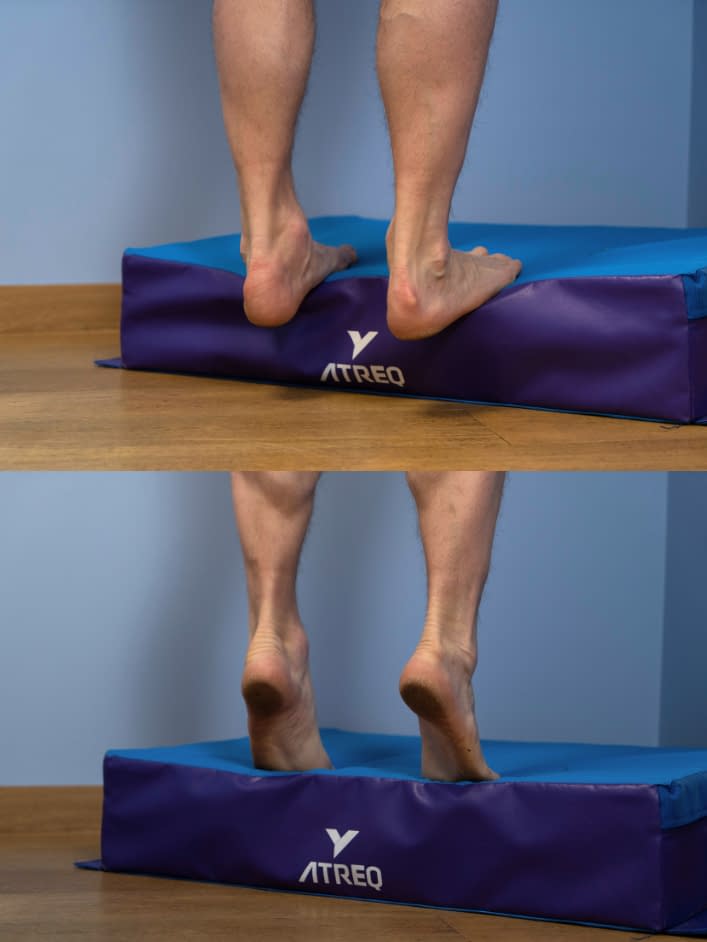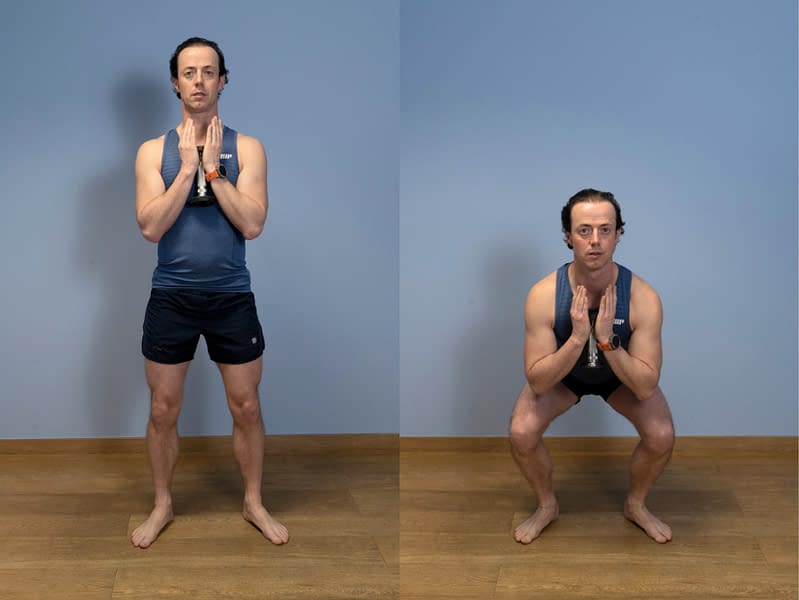Tibialis Posterior Tendinopathy Advanced Exercise Programme
Aim to perform this programme a minimum of once per day unless prescribed otherwise. As with any new exercise, start slowly (repetitions as able) and build up as you are able within the guidelines below.
Pain should not exceed 5/10 whilst completing this exercise programme.
1. Single leg heel raise with inversion from a step
- Stand at the bottom of the step facing it.
- Stand upright on the step with only the front half of the targeted foot on the step so that the heel can drop down – have a wall/stable object nearby to assist with balance.
- Push down through the front of the foot as if going up on your tip toes – the heel will begin to rise.
- At the top of the movement, turn the foot outwards as if to lift the arch of the foot.
- Lift the heel as high as possible and then with control, slowly lower the heel all the way down over the course of a 5 second count.
2. Balance and reach
- Start by standing with all the weight on one leg.
- Rest the other foot next to the standing foot for balance.
- Now with the non-standing leg, reach out sideways (hovering just above the floor) as far as possible whilst at the same time bending the standing leg.
- Then return to the start position maintaining your balance.
- Repeat in a forwards and backwards direction and continue to do this in a cycle of the three movements, only touching down if you start to lose your balance.
3. Weighted squat
- Stand upright with your feet hip-width apart and a weight placed evenly across your shoulders (back squat) or holding it securely against your chest (goblet squat).
- Engage the abdominal region and, in a controlled manner, sit back as if you are sitting into a chair.
- At the same time, your head and chest will come forwards to maintain your balance, aim to keep your back straight.
- Go down as far as you feel comfortable or until your thighs are parallel with the floor.
- Come back up to standing and repeat.
We recommend consulting a musculoskeletal physiotherapist to ensure exercises are best suited to your recovery. If you are carrying out an exercise regime without consulting a healthcare professional, you do so at your own risk. If you have any concerns whilst completing these exercises, please contact a healthcare professional.
More Plans
This programme begins the process of loading the tendon in a gentle way to avoid aggravating the condition. Pain should not exceed 5/10 on your self-perceived pain scale whilst completing this exercise programme.
- 0
- 1
- 2
- 3
- 4
- 5
- 6
- 7
- 8
- 910
At this stage, the exercises become more challenging to try and put more stress on the tendon and stimulate it to recover. Pain should not exceed 5/10 on your self-perceived pain scale whilst completing this exercise programme.
- 0
- 1
- 2
- 3
- 4
- 5
- 6
- 7
- 8
- 910


